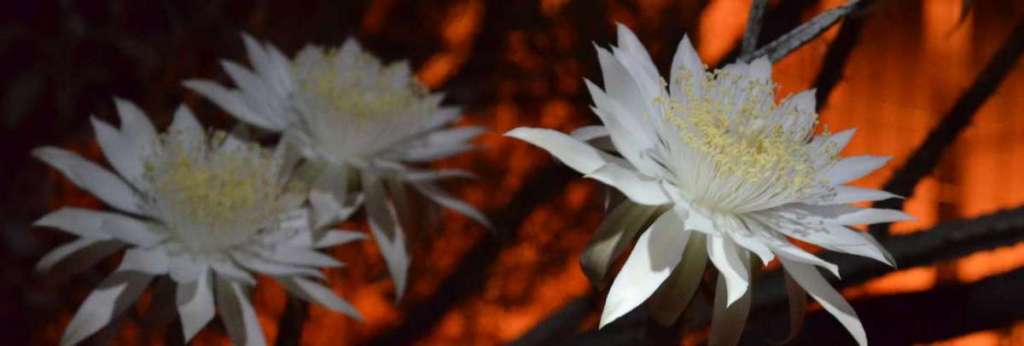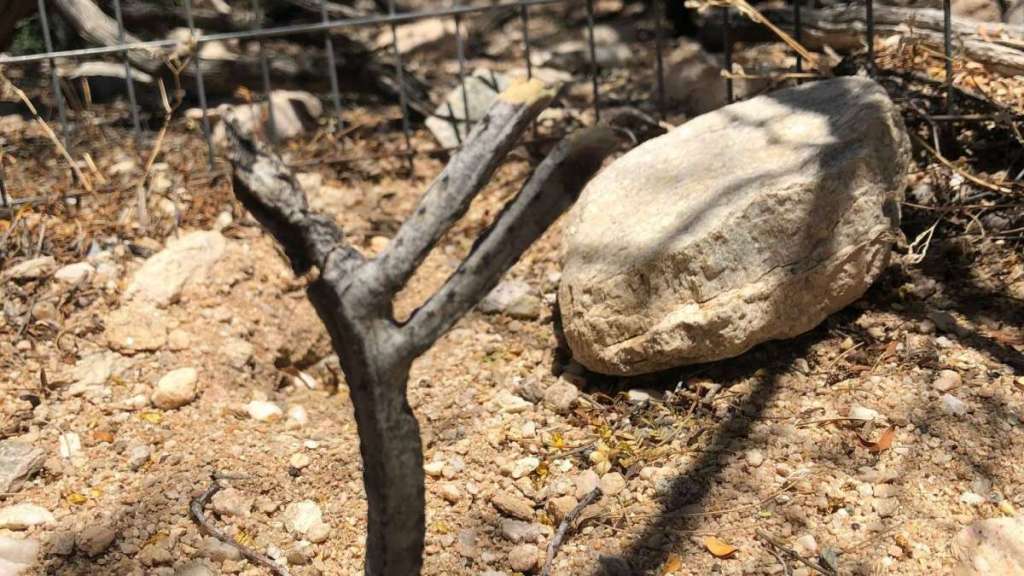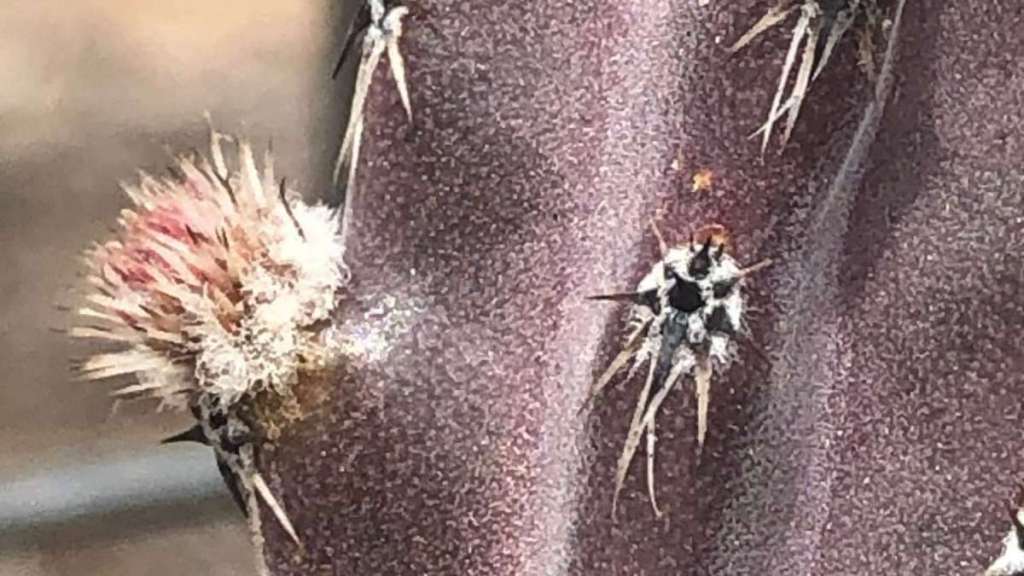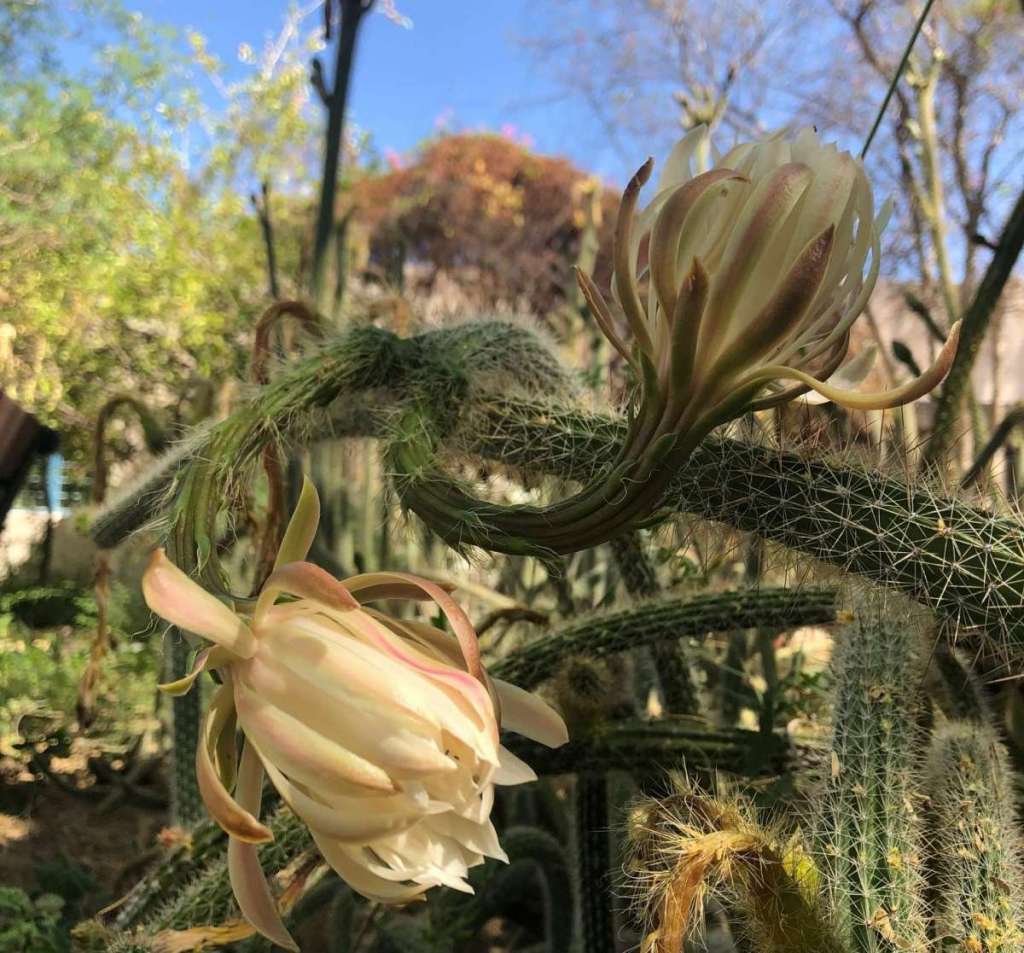
Bloom Watch #1 – It’s That Time Again
May 13, 2021Resilience, Of All Kinds
It’s been nearly a year since my last report. As many of you know, I took over this post just weeks before Bloom Night 2020. If you’ll bear with me a moment, I’d like to reflect on that experience. It’s been quite a year that has passed since then, and as I look back at all the chaos and uncertainty that all of us have faced since then I’m struck by what a truly special thing it was to have been able to share that night with anyone at all.
As we were pulling the plug on our virtual experiment last June, a short-lived lighting storm rolled through our part of town. One of those lightning strikes ignited the Bighorn Fire which dominated both our backyard and the news in Tucson for the better part of that month. The park was still closed to the public as we watched the fire fizzle out and came to terms with the crisis that allowed that fire to spread so rapidly: drought.
2020, we now know, was the driest year in Tucson’s recorded history. Supplemental watering here in the gardens became a full-time job as we prepared to reopen to the public. We’ve been watching for months now as the wildlife that calls Tohono Chul home adapt to this new reality. Mostly, we notice bite marks. Nearly all our critters are seeking out water sources anywhere they can think to find them. No plant is spared this search for sustenance, including the one I’m here to write about today.
While existential (and occasionally adorable) threats remain, there is reason to be optimistic.
I’m happy to report that nearly all of our bloom contenders from last year are holding strong. Some plants found the double whammy of teeth marks and lack of moisture to be too much to bear and appear to have simply given up at the above-ground level. However, the tubers of Peniocereus are tough as nails and will often send up a new stem just as soon as we’ve written them off.
For Bloom Night 2021, I am tracking approximately 50 plants on our North Loop Trail, 15 plants on the South Loop Trail and a handful in the middle of the gardens. As for blooms, only a few of the showpiece Peniocereus greggii have any signs of activity. The tiniest of buds appeared this last week.
Two of our earlier blooming species in the genus, Peniocereus marianus and Peniocereus serpintinus have already put on a show.
Many of you may be surprised to know that the largest Peniocereus on property (and possibly the largest in Tucson) is tucked away in a pretty inaccessible part of the gardens hidden away between two gangly Palo Verdes. This Peniocereus marianus always produces a large number of buds which inevitably get eaten by ground squirrels before they can bloom. This year’s bud to bloom tally was 34 to 12. We’ll take what we can get. In the Sundial Plaza, the ever-trustworthy Peniocereus serpintinus has just begun blooming. Last Friday we tallied nearly 78 blooms in one night. This show will continue through the summer and possibly into early fall.
Lastly, I have good news for our members: This year’s in-person Bloom Night is for you and you alone. More on that soon.
Thanks for your continued support and I’ll see you all in approximately 3-6 weeks (or more, maybe less)…
— Bryce Beamish, General Services Manager, Tohono Chul





